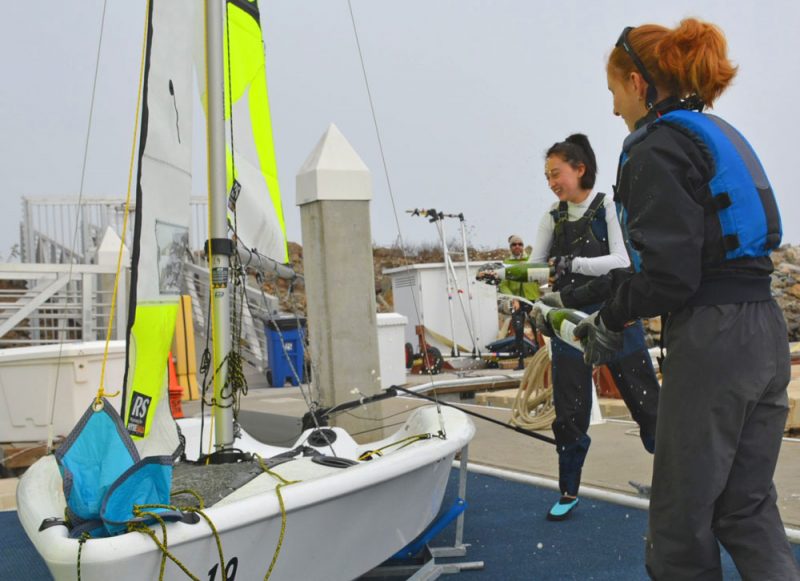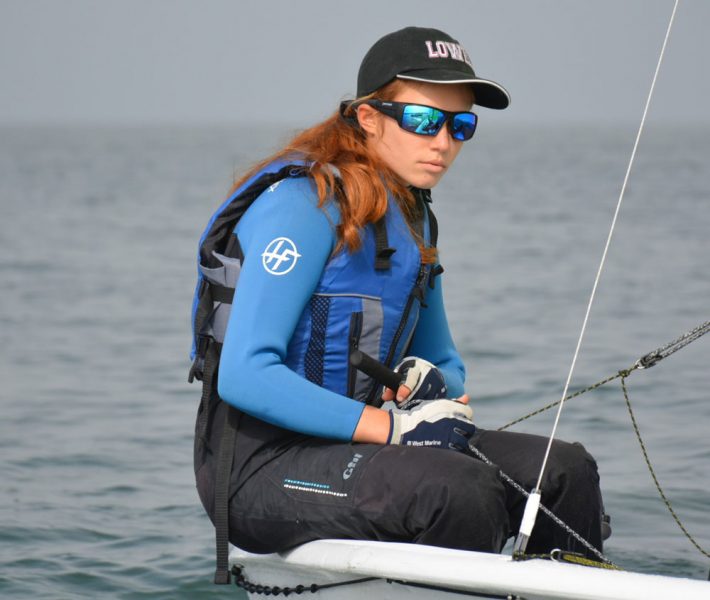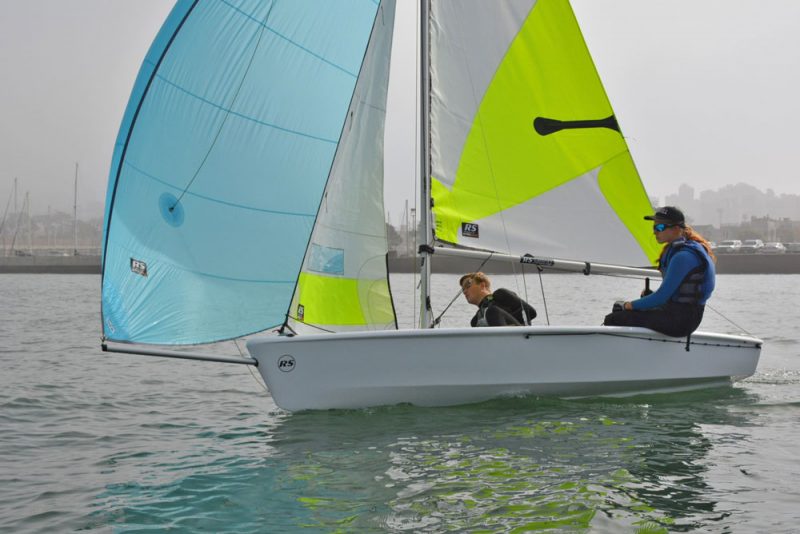
A New Favorite Boat for Teenage Sailors
I don’t think I’ve ever been as excited about a new boat as I was when I heard about the RS Fevas. As a sailor for the Lowell High School sailing team at Golden Gate Yacht Club, I was more thrilled with the news that the club would be getting one of these new sailboats than I was when I heard that I would be getting my own C420. But could anyone blame me, who usually sails FJs and 420s, for being so excited over a fast, new, two-person dinghy with an asymmetrical spinnaker and an open back? This excitement only built when I saw the RS Fevas on the docks. I was told that on Saturday, November 9, I would be able to test them out for the first time. I spent weeks counting down the days until I’d get the chance to sail one. Once that day finally came, I savored every second of it. Instantaneously, the RS Feva became one of my favorite boats to sail.

I hopped onto the boat with very little knowledge of how it operated and how it’s sailed. I was unable to participate in much of the rigging process due to getting an FJ ready for other sailors, and I had no previous experiences with the boat. Although the rig felt extremely different from what I was used to, skippering was about the same. Besides repeatedly hitting my crew with the long tiller, I had no issues driving the boat.

Conditions were extremely light, but this boat still managed to sail fast with the spinnaker downwind. In the channel, we found that it moved slower than we would’ve liked on the downwind, so we decided to take the jib down to give the spinnaker more air. The boat was able to move much faster with this change, although due to there being no place for the jib to go, it would sometimes drag in the water. It shouldn’t be required to make this change with more wind, but while sailing in the channel with less than 5 knots, it proved useful. Outside the channel, we had a fantastic experience with the spinnaker up. The boat moved extremely fast through the water, and it quickly became my favorite way of sailing it. Upwind, I found that the RS Feva could point much higher than an FJ but still not as high as a Laser, and I believe this could be advantageous while racing.

Although the boat is built for two people to operate it, I still decided to try to sail it on my own. And, to my surprise, it was not as hard to accomplish as I’d imagined. Due to the boat’s having jib cleats, I did not have to worry about holding the jib. I was able to keep my tiller extension and mainsheet in one hand while operating the spinnaker with the other. Jibes and tacks were extremely slow due to my having to switch over the jib and boom to the other side before I could resume sailing more appropriately, but I found the overall experience to be worth it. Sailing on my own provided me with more freedom, and I found it an exhilarating experience overall. Yet, because I had no prior knowledge of how to operate the boat, I found myself with no knowledge of how to take the spinnaker down, so I had to call someone over to explain it to me. Because of this, I do not know how difficult it would be to take the spinnaker down when sailing by oneself.
Later in the day, I decided to hop onto the boat again, but this time with two other sailors with me. I operated the mainsheet while one of us controlled the tiller, and the other managed the jib and spinnaker. Usually, two of us hiked while I trimmed the main from the leeward side, and I would only join them once we were moving fast enough for the boat to over-heel. This improper way to sail the Feva was still extremely fun due to the social aspect and the shared excitement when the sailboat was moving at its top speed in the given conditions.
Although during my sail I never capsized the boat, I did witness another Feva capsize. Due to its being lightweight, the skipper was able to bring it back up quickly. The weight is something I personally really enjoy about this boat because I usually have trouble bringing up 420s and FJs. The boat’s weight also makes it much easier to transport.
I believe that the RS Feva is going to become extremely popular once programs start running in the spring. Firstly, the boat will help Opti and Tera kids to transition to 29ers and later 49ers by providing them with the ability to learn fundamental spinnaker control as well as two-person communication, which is essential for more advanced boats. Secondly, the RS Fevas are easy to learn and fun to sail for those already familiar with more advanced sailboats. As a regular 420 sailor, I was able to learn the basics of operating the boat within two hours on my own due to its simplicity. The dinghy’s light weight allowed it to sail extremely fast even with very little wind, making it almost addictive instantaneously.
With the help of the Siebel Sailors Program, I can imagine that this boat will not only bring more kids to more advanced boats but also introduce more passionate kids to sailing. Either way, I’m ready to get back on the water in the spring, and I’m excited to see how the RS Feva will grow into the youth sailing community.

Great read , well done skipper !
Nice ink Anna!